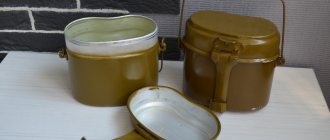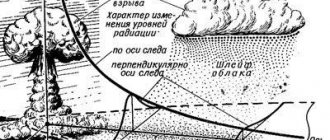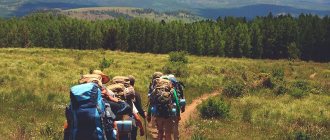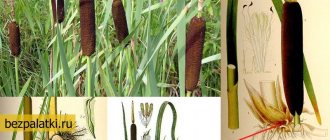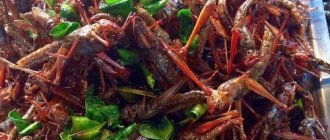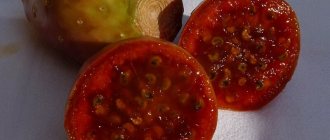What is the composition?
Most often, the term “pasture” refers to grasses and small shrubs. All kinds of mushrooms and berries also fall under this definition. To some extent, various kinds of bugs, spiders and worms can also be considered pasture.
Of course, there are other varieties of similar food suitable for animals or humans. Therefore, it is quite difficult to disassemble pasture by composition. This concept is very broad, so a wide variety of foods can fall under it. Below we will look at what exactly can be considered such food in a given situation.
Survive by grazing
“Work is not a wolf; it won’t run away into the forest,” says a Russian proverb. But if there is no work, you have to run into the forest yourself. In Siberia, the forest literally feeds people left without any opportunity to earn money. Residents make money by collecting and selling wild plants - mushrooms and berries, and with the money they earn in the fall they sometimes manage to live the whole winter. A Radio Liberty correspondent was convinced of how hard this work is.
Pine nuts have not grown in Siberia this year, blueberries are scarce, so all hope lies in mushrooms and lingonberries and cranberries. However, too good a harvest is also bad, because if there are a lot of berries and mushrooms, the purchase price will fall and you will have to harvest twice as much. In the Tomsk region this year there was an unprecedented harvest of porcini mushrooms, and the price for them has dropped by half. Resellers take first-grade mushrooms from the population for 60 rubles per kilogram, while last year they took 120. Over the summer and autumn, hundreds of tons of wild plants are collected in the forests of the Tomsk region, but for local consumers they still remain a luxury. Almost all mushrooms and berries collected in the region are sold to the central part of Russia and exported to Europe and China. Only 10-20% remains on the local market. The same mushrooms and berries are then brought back from China, albeit in canned or frozen form.
The hottest commodity among wild plant harvesters this year is porcini mushrooms.
Now the collection of wild plants in Siberia is in full swing. The swamps are full of cranberries, the villagers are in a hurry to collect them and sell them before purchasing prices drop.
At collection points for cranberries today they charge 600 rubles per bucket. “It's a good price. Very good,” says Tatyana Purgina . She has lived in Komsomolsk with her husband for more than ten years. There is nowhere to work; the last timber industry enterprise in the village closed a couple of years ago, so they rely exclusively on wild plants. “There is no other job. It’s like our entire village is collecting,” says Tatyana. She herself graduated from the ninth grade of school. “I didn’t study to be anyone, I wanted to, but I still couldn’t get around to it,” she sighs. - Yes, and when here! Either berries, or mushrooms, or a pine cone.”
Tatiana Purgina
Tanya and her husband Sasha spend all summer and autumn, every day, without weekends and holidays, in the taiga. They leave early in the morning and return in the evening. In winter, rose hips and rowan are collected. Tanya and I are driving in her old Volga to the Second Log, a swamp that is now full of cranberries. Those who don’t have cars go to the swamp on foot, with cranberries on their backs - these are large aluminum boxes with straps, you can collect 5-6 buckets of cranberries in them.
“Before we bought a car, we also walked, but it’s very difficult, especially when you’re picking berries on an incline all day, and then you’re carrying them for several kilometers.” – Tatyana abandons the car on the highway, and then we walk. There are no more berries at the edge, we need to move deeper into the swamp. It has been raining here for almost a week, so you have to wade through knee-deep water. “Sometimes you come across a lot of it, sometimes you don’t get enough, so you go and look for it. She’s hiding now, you see, there’s no sun for her, she has to bend down to look for it.” – Tatyana deftly picks up several berries from the next moss hummock and moves on, squelching her boots.
“There are twice as many cranberries now as last year. This is good. And the bears are already well-fed, it’s not scary to walk around,” Tanya says, smiling slyly, looking at our reaction. There are a lot of bears in these places, sometimes when they are hungry they come into the villages, so you have to call the rangers.
In rainy weather you cannot pick many berries. A bucket maximum, or even half. On nice warm days, Tatyana and her husband bring five buckets of cranberries from the swamps. Over the summer they earned 45 thousand rubles between them. This is a lot of money for the village.
– Do you eat the berries yourself? – I ask Tanya.
– Of course, but we take it for ourselves last.
– Aren’t you tired of her? Maybe some delicacies you sometimes want?
“Yes, we have delicacies - there’s fish in the river, the same muksun,” Tatiana laughs. - We only buy bread at the store, and sometimes sausage...
On the way to the collection point for wild plants, the conversation turns to “life.”
– We hardly watch TV now. We don't really follow the news. And why keep track of who stole what from whom,” Tanya laughs.
- Well, do you know what’s happening? About Crimea, the same sanctions...
- We know, of course...
– What do you think about this?
– What do you think, sanctions are neither good nor bad for us. We are already accustomed to all this. They say that homemade tastes better, without chemicals, but who will provide this homemade food to everyone in the city? There is nothing, there are no farms, but people must provide for themselves, in the village we will get ourselves a cow and a goat, but what about in the city?..
– So you don’t really support the introduction of sanctions? – I clarify just in case.
- No, I don’t support it. Yes, let there be everything different for us, rather than nothing at all...
– Do you feel a crisis here? - I ask.
– It still feels like it! Prices are rising for everything, the same for gasoline... My mother wanted to go to Altai on vacation, but she couldn’t - it’s expensive. We can’t go to Altai, let alone Crimea...
The collection point for wild plants in Komsomolsk is located in a small extension. The entire floor is filled with boxes of cranberries. The goods brought by local residents are immediately weighed and packaged. Payment in cash. The cranberries collected by Tatyana in three days amounted to one thousand four hundred and fifty rubles.
Reception point for collected wild plants
Due to the rains at this point the speed dropped somewhat. Few people dare to go pick cranberries in such weather. Closer to lunch, an elderly man came up to hand over the berries. There is not even half of his bag. “Something is not enough,” notes the entrepreneur taking the berry. “The weather doesn’t cooperate. “I’m so wet,” he answers tiredly, pointing to his thoroughly wet jacket.
Anton Plotnikov's company collects wild plants in 20 villages of the Tomsk region. Logistics have already been arranged. One problem is the roads. It sometimes takes several days to transport mushrooms and berries from remote villages and towns.
“Somewhere there is a crossing, somewhere on all-terrain vehicles,” says Anton. “This year we went to pick up mushrooms in one village, got stuck, broke three cables, and they pulled us out with Urals.” A young businessman from Komsomolsk alone exported several tons of berries and mushrooms over the summer. His company is mainly engaged in wholesale sales, so the margin is small, 20 rubles per kilogram. The population now buys cranberries for 60-100 rubles per kilogram, depending on the quality. Most of the goods are exported. It is now profitable for foreigners to buy wild plants in Russia. The dollar exchange rate has increased, but purchase prices for berries and mushrooms have remained the same. So foreigners are buying everything for pennies.
“Due to the jump in the exchange rate, it is profitable for foreigners to work with Russia, so we are sending our little fox to Lithuania,” says Anton.
– Do you give them the same money as here in Russia? – I clarify.
“Yes...” Anton laughs. – Our price does not depend on currency exchange rate fluctuations. We sell at the same price to everyone. But it’s even more profitable for us; now they take more from us because of this difference in the exchange rate than from the Chinese. Previously, the Chinese actively traded lingonberries, they learned to cultivate lingonberries, but not yet cranberries. But our berries are better, they are environmentally friendly and are valued higher because they contain more vitamins. But it also costs more, but the Chinese had it cheaper before.
This is what the area looks like where wild plant gatherers work
Businessmen themselves call the market for wild plants in Russia wild. Entrepreneurs are left to their own devices. Many companies are closing down, unable to withstand competition with China, which buys, for example, pine nuts in the Tomsk region, takes them home, processes them, and then sells the clean kernel back to Russia, and at the price of an unshelled nut. The Chinese can afford this due to the same state subsidies that Russian businessmen did not have and do not have.
Anton loads his small minivan to the brim with boxes of cranberries. He has a 200-kilometer journey to the city. Tomorrow he will return here again to take away a new batch of goods. Anton will continue to shuttle between the village and the city until winter. This year the harvest of berries and mushrooms is good. Everyone can make money. And what next is unknown. Wild plants are a seasonal product and not guaranteed by anyone.
Free food for animals
For livestock and poultry, almost any grass is such food. This could be nettle, quinoa, mint, leek, spurge, dandelions, etc. For cattle and small cattle in the summer, pasture is one of the main sources of calories. For most of the day, cows, goats and sheep graze in the pastures.
Of course, free food is also good food for various types of poultry (such as turkeys or chickens, for example). In this case, pasture can help the farmer save money. Many homestead owners let birds out to feed in the yard and on the street.
With some stretch, aquatic plants can also be called pasture. Domestic ducks and geese feed on them. This feed also allows homestead owners to save on the diet of their poultry. Farmers do not allow only rabbits to graze. Even pigs are often allowed to wander around the field and look for something edible for themselves.
Dietary rules
Like any diet, a cleansing diet based on pasture has its own dietary rules.
Rule one
Down with fried food! Fried foods bring nothing but harm.
Rule two
Replace heavy, rich soups based on meat broths with vegetarian soups and okroshka.
Rule three
Eat more greens, fruits, berries and vegetables; they contain healthy nutrients, fresh vitamins and fiber.
“Nutrients are biologically significant elements (as opposed to biologically inert elements) chemical elements necessary for the human or animal body to ensure normal functioning.”
Wikipedia
Rule four
For dessert, eat only nuts and light desserts.
Rule
five
: Limit salt intake
Rule
six
: Add ice to drinks! For what? Ice suppresses digestion, which means that hunger will be under control.
Rule
seven
: Instead of dishes made from pork and fatty beef, cook dishes made from veal, chicken, and turkey.
Rule
eight
: Include low-fat fish and seafood in your diet
Rule
nine
: Increase the amount of fluid consumed up to 2.5 times. What drink?
- Water
- Mineral water
- Kvass
- Green tea
- Herbal hour
- Coffee
- Morse
- Juices
And further
Don't forget about mushrooms and nuts, they are great natural protein. Replace the sausage with boiled chicken breast. Don't miss the chance to enjoy fresh honey.
Waste
Sometimes the concept of “pasture” for animals can include completely strange things. In India, for example, as you know, cows roam completely freely along the streets of cities and villages. Of course, no one feeds these animals, sacred to the local population, specifically. Therefore, heifers and bulls are forced to eat in landfills, of which there are simply a huge number in this country. Thus, household food waste can sometimes also be included in the definition of pasture.
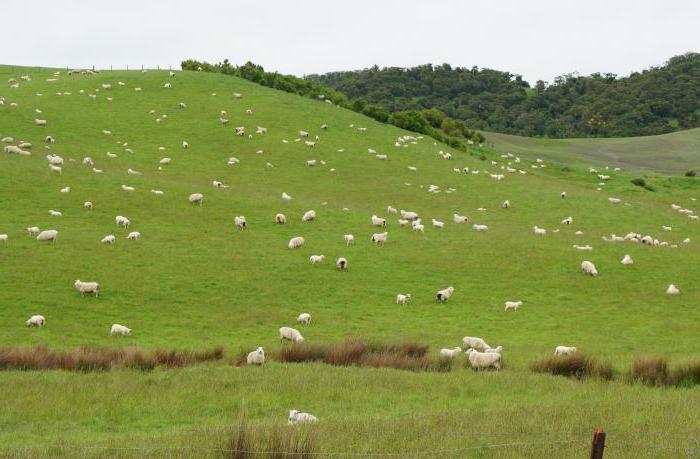
Russia is not much richer than India. Fortunately, cows do not roam the streets in our country. But various types of trash cans are a good help for cats and dogs. Of course, this is not very good. But, unfortunately, Russia does not have the opportunity to maintain shelters for pets in the same way as, for example, it is done in the USA and developed countries of Europe.
Pasture in the forest
Of course, free food can be used by humans not only during difficult historical periods. Anything can happen in life, and you often have to turn to such food, for example, when you get lost in the forest. In this case, to maintain strength, in addition to nettle and quinoa, herbs such as sorrel, hogweed, sorrel, lungwort, field cabbage or even plantain and clover can also be used.

Good pasture for a person lost in the forest are also berries such as rose hips, raspberries, blackberries, junipers, lingonberries, etc. Of course, in groves and oak forests, among other things, you can find a variety of mushrooms - boletus, white, row, boletus, russula.
They are switching to pasture!

Many stars admitted that recently they have also become seasoned gardeners.
The celebrity agricultural movement has received a powerful new boost thanks to the pandemic.
It all started when Maxim Galkin boasted: his famous wife is actively involved in gardening. On Instagram, the artist gave an online tour of the greenhouse, which was built on the initiative of Diva on the territory of the estate in the village of Gryaz.
“Here we grow tomatoes, onions, sweet peppers, and carrots,” said Maxim. - Look how luxurious the radishes are already. You can’t even imagine the aroma here!”
Galkin assured that Alla Borisovna grows vegetables, root crops and herbs with her own hands! This is her hobby, which now helps to pass the time during quarantine.
But besides Pugacheva, other stars regularly dig in the garden beds. Greenhouses and vegetable gardens occupy a significant part of the territory in the country estates of Elena Proklova, Maria Kozhevnikova, Yana Rudkovskaya, Lolita, Angelika Varum...

During quarantine, when there are no events or projects, show business figures can devote much more time to their “plantations” than before. “But this is still just a hobby for them,” many people think. “Whereas for mere mortals, their own garden has become a way of survival.” So celebrities are also thinking about survival! More precisely, that their gardening experiments can become a real help in the event that the regime of restrictions and the accompanying show business crisis last longer than everyone expects.

“I used to have mostly lawns and flower beds,” says the matchmaker from “Let’s Get Married!” Rosa Syabitova. “And I approached all this very thoroughly.” I didn’t hire a gardener, I studied everything myself: I experimented, I tried. But then there’s this pandemic, quarantine, and I thought it would be nice to start growing my own vegetables so that I don’t have to run around for them again. I installed the simplest greenhouse... But so far things are not going well here. For some reason, the cucumbers are quietly bending over. I walk around them and don’t understand what they are missing? But I’ve already prepared for the future harvest of vegetables: I converted my wine cellar into a regular one, for jars with twists. Will there be a harvest, will there be any spins? I'm worried...
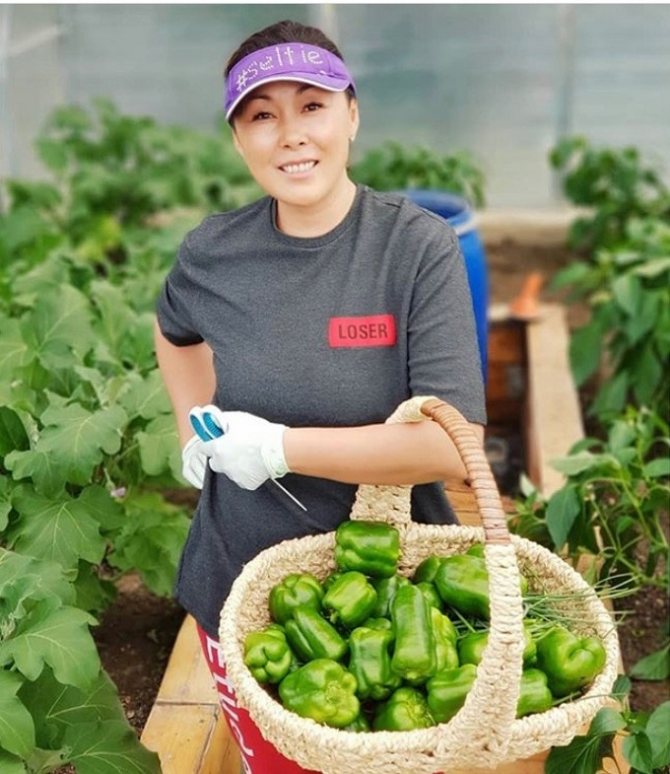
“I have been actively involved in gardening for many years,” says Anita Tsoi. — I grow all possible crops in our area on my plot. I even grow mushrooms, I also breed them specially. At first, all this was, of course, a hobby for me. But then the pace of “production” began to increase. And now I don’t buy practically any vegetables and fruits in the store or at the market - everything grows at arm’s length. I have always devoted a lot of time to my garden, but, of course, this year, when I am in self-isolation, there is more of it. I don’t know what awaits us, so I allocated additional space for garden beds. For example, this year I probably planted twice as many potatoes as usual. And with other crops, we also increased volumes. These are difficult times, and, of course, your garden can always help out.
“I live in the country and don’t plant anything,” the legendary TV announcer Anna Shatilova admitted to us. “But I’m not the only one isolated here.” My son and daughter-in-law are with me almost always. The daughter-in-law just laid out the beds. She believes that in a situation like now, your own garden is very necessary. For every fireman!
Larisa Molodtsova.
Photo: social networks.
Pasture in the steppe
It is, of course, more difficult to get lost in the steppe than in the forest, but it is still possible. In such an area, pasture can include bird eggs (for example, larks), cereal plants, elm buds, wild garlic, thresher, and hazel grouse. You can also support your strength with hemp seeds.
In ancient times, nomadic peoples caught gophers from their holes, roasted them over a fire and ate them. The meat of these animals in this case can also be classified as pasture. But, of course, you should eat it only when absolutely necessary. Gophers are carriers of many diseases.

After rain, mushrooms appear in the steppe, as in the forest. Most often these are puffballs or champignons. Quite edible rows and feather grasses are also common in the steppe.
Free food by the sea
It is much easier to find food in such places than in many others. Eating pasture by the sea is a relatively simple matter. For example, in coastal meadows, edible and quite tasty plants such as wild parsley, long-tailed duck, mertensia, china, and garlic grow in abundance.
Actually on the beach, various types of shellfish can serve as pasture - mussels, Nutella, natik. The meat of these sea creatures is very nutritious, but it should be eaten carefully and not in too large quantities. Many mollusks, including mussels, are capable of accumulating substances that are toxic or harmful to humans in the tissues of their bodies. Of course, near the sea, various kinds of aquatic plants can also serve as pasture. For example, kelp, alaria, ulva, and fucus “bubbles” are edible.
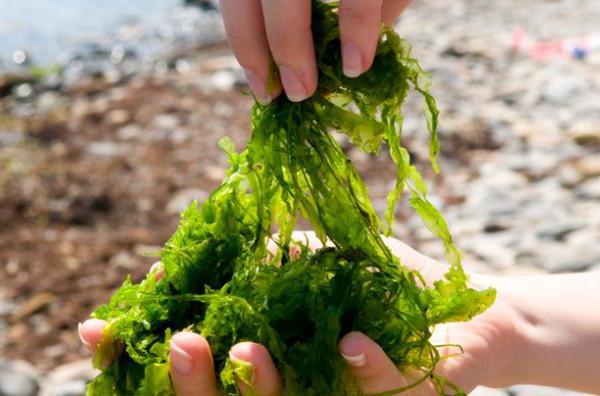
Jerusalem artichoke is the best pasture for the army and the population

Jerusalem artichoke, general plan. See how it grows in our Palestines
Let's continue the evergreen theme of hunger and war. For wartime agriculture, which will undoubtedly experience an acute shortage of labor, equipment and fuel, the most important are crops that grow well, produce large harvests and do not require labor-intensive care.
One of these crops is Jerusalem artichoke. It is also known as earthen pear. An amazing plant that in our latitudes produces about 36 tons of green mass and about 43 tons of tubers per hectare (in favorable conditions - up to 150 tons of green mass and 232 tons of tubers per hectare). The green mass is used as animal feed, and the tubers can be eaten raw, cooked and obtained from them in a number of food products, as well as obtained into sugar syrup, suitable both for consumption and for processing into alcohol.
Jerusalem artichoke is frost-resistant, its tubers are often planted in October as a winter crop, and the harvest is harvested the following year. Its agricultural technology is very close to potato technology, and therefore harvesting is possible using potato harvesters, for example, KKU-2A with a special attachment. If you leave about a third of the tubers in the ground after harvesting, you can maintain its planting for 4-5 years in a row (subject to the application of fertilizers), although in some cases the crop was grown in one area for 30-40 years in a row. In general, it’s not a culture, but a military agronomist’s dream.
However, it also has a serious drawback, due to which Jerusalem artichoke lost competition to potatoes. Its tubers cannot be stored for a long time. Peeled tubers are stored for about a month, and tubers that are not peeled from the ground - 2.5 months. Even minor damage to tubers causes rapid spoilage. That is, Jerusalem artichoke cannot be dumped in the basement like potatoes and spent little by little. Therefore, an attempt to introduce it on collective farms in the 1930s failed. Jerusalem artichoke must be processed immediately after harvesting, and this processing turns out to be very labor-intensive. And in general, without mechanization, a lot of labor is required for both cleaning and processing.
But still, the crop is very attractive for wartime, especially since over the past decades a lot of experience has been accumulated in its cultivation and processing. You can adapt to its features.
Culture to feed cities
The main advantage of Jerusalem artichoke is that it can be cultivated on small plots of land.
As a perennial plant, it does not require tillage. All that is required is loosening of row spacing and hilling. The soil for potatoes needs to be plowed and harrowed thoroughly, otherwise it is difficult to get a good harvest and large tubers. The exclusion of plowing and harrowing from work is a serious plus for the military economy, since it is these agricultural works that account for the main fuel consumption. A small plot is, for example, a summer cottage or a vegetable garden. According to the experience of those who cultivated Jerusalem artichoke in small plots where the land can be well fertilized and the crops can be cultivated, the yield was 1.2-1.5 tons of tubers and 3-4 tons of greens per hundred square meters. 1200 kg of tubers per hundred square meters is a lot; this is a daily diet (it is recommended to consume about 300 grams of Jerusalem artichoke tubers per day) for 4000 people, or for 130 people for a month.
That is, it is a food crop for populated areas, especially cities. Small plots of city land set aside for vegetable gardens, as was done, for example, in besieged Leningrad in 1942, can greatly alleviate the tense food situation. An urban agglomeration in which this matter is done well can produce a lot of Jerusalem artichoke. One hectare will produce enough tubers to feed 4,700 people for a month, based on a yield of 43 tons per hectare.

Jerusalem artichoke tubers
If you sit under siege for a long time or fight in an isolated area with insufficient food resources, planting Jerusalem artichoke will allow you to avoid starvation. The tubers can be eaten raw (up to 150 grams per day), and tea is brewed from the leaves. You can press the sweet juice from the stems and tubers, which can be boiled down to a sweet syrup.
The fact that Jerusalem artichoke is essentially a winter crop also makes it possible to bypass restrictions on its storage period. To do this, the tubers are simply left in the ground after ripening and dug up as needed. In warm winters with little snow, this is most convenient to do. There is also a way to store harvested tubers in basements or in pits where the tubers are sprinkled with sand.
I have not come across any information about growing Jerusalem artichoke in greenhouses. However, apparently, in a greenhouse with lighting, unheated or heated to room temperature in winter, Jerusalem artichoke can grow almost all year round and ripen faster than in open ground. I have always been outraged by the cooling towers of large state district power plants, in which millions of gigacalories of heat are released into the air to condense waste steam. This residual heat must be brought into greenhouses and spent on growing food crops like Jerusalem artichoke.
Mechanical cutting problems
Both the Jerusalem artichoke itself and many of its products are perishable. However, dried Jerusalem artichoke can be stored for a long time, up to a year. It is not done in such a complicated way. The washed tubers are cut into slices, which are dried for 4-5 days under a canopy in the shade in the open air or 2-3 hours in the oven at 60 degrees.

Dried Jerusalem artichoke
The whole problem is the labor-intensive preparation. Using a knife to manually chop even a ton of tubers will cause your hand to fall off. Mechanization is needed. Industrial machines are very expensive. For example, a root cutter for cutting potatoes into strips or slices with a productivity of 500 kg per hour cost 350 thousand rubles in 2020. With a capacity of 3 tons per hour - 585 thousand rubles. If you need to process the harvest from several hectares or tens of hectares, you cannot do without them. For a smaller scale, there are manual vegetable cutters, in the cost range of 1.5-3.5 thousand rubles, which are much more productive than a knife. Electric vegetable cutters are not very suitable as they often have a limited operating time. There are also attachments and knives for cutting vegetables for electric meat grinders; I think that for processing crops from a small plot and at home, this is the best option in terms of productivity and labor intensity of the process.
In principle, a set of modern kitchen equipment allows us to solve the problem of the labor intensity of preparing Jerusalem artichoke for drying (which collective farmers could not do in the 1930s; they did not yet have such equipment). After drying, there is a supply that will last in a cool place for about a year. Dried Jerusalem artichoke can be chewed dry or boiled; it is similar to dried potatoes.
To the delight of the pigs
Before harvesting, Jerusalem artichokes should be mowed to a height of 30-40 cm from the ground.
This operation is carried out two weeks before harvesting the tubers in the fall. Or you can mow twice a year, in summer and autumn. After the first mowing, the plant has time to grow back. On an industrial scale there are no particular problems here; for this there are special mowers and forage harvesters for tall crops. But for small plots, a few hundred square meters or a couple of hectares, mowing Jerusalem artichoke can turn into something comparable to the labor of slaves on sugar cane plantations. Mechanization is also needed here. If possible, you can use a rotary mower for a walk-behind tractor (such mowers are used for corn or reeds). Or here is a wonderful German idea: a manual mower for reeds: from 5 to 10 link knives, movably connected by bolts and equipped with weights, at the ends of two chains with handles. Two people alternately pull this mower towards themselves, like a two-handed saw, and mow a strip 2.5 to 5 meters wide.
Roscosmos is going to help a private company create a reusable spacecraft
Why is this so important? Because hindsight can be costly if you plant Jerusalem artichoke and then find out that you don’t have the strength to mow it. With this issue resolved, the stems and leaves of Jerusalem artichoke will be used as feed for pigs. In principle, the spring collection of winter tubers and then mowing the green mass will make it possible to fatten pigs and poultry without the use of other types of feed, for example, bran or compound feed. In wartime, grain is valuable, the percentage of grinding increases and therefore bran, waste from flour milling, also becomes less.
A curious feature of Jerusalem artichoke is that it can be fed to pigs without harvesting. The pigs are simply released onto the mown field, and they dig up and eat the tubers themselves. A dozen hectares of Jerusalem artichoke crops in the immediate vicinity of the pigsty is quite capable of solving the feed problems of a pig farm. Yes, in the military economy you have to think about such issues, since it is, of course, possible to fight without pork, but it’s hardly good.
In general, it is possible to fight without missiles and planes, although it is difficult, but without food it is impossible. Therefore, agriculture must be prepared for war to the best possible extent, including crops that can be grown quickly, easily and least labor intensively.
Thus, Jerusalem artichoke is a very good military food crop, providing both a food product for people and animal feed. You can get a lot of Jerusalem artichoke from very small areas. It is difficult to find a better crop to feed the army and population.
The meaning of the expression in a figurative sense
Thus, pasture is, first of all, free food found, most often of plant origin. However, this expression once had a slightly different meaning. Previously, in Russia, all governors and chiefs who received positions in cities were supported at the expense of the population. Such places were especially attractive for representatives of impoverished noble families. For obvious reasons, these positions were called “pasture.” They often brought very good income.
Casserole “Jolly Sorrel”
To prepare this dish you will need:
- 500 g sorrel;
- 50 g dill;
- 2 glasses of milk;
- ½ tbsp. rice;
- 2 tbsp. l. crackers;
- 4 eggs;
- salt pepper.
Finely chop the sorrel and parsley and mix. Next, the mass is salted and simmered over medium heat (5 minutes). Rice is boiled in two glasses of milk. Cool it and mix it with the green mass. The whites are whipped into a foam and also added to the rice. Grease a frying pan with vegetable oil and place the mixture on it. Rice is baked in the oven.
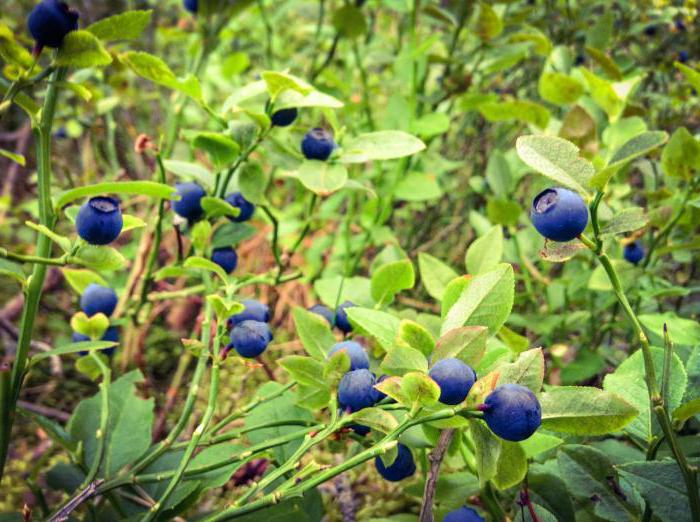
Nettle kundums
In this case you need to take:
- 500 g nettle;
- 2 onions;
- 100 g champignons;
- 50 g dill;
- regular dumpling dough;
- 4 tbsp. l. vegetable oil.
First, prepare the minced meat. To do this, wash the nettles and pour boiling water over them. Drain it in a colander and then chop it very finely. Champignons are also boiled and cut into pieces. Add onion and dill to the mixture. The dough is rolled out into a rope, cut into pieces and made into circles. Cut out squares of approximately 5 x 5 cm. Place minced meat on each. They make kundums and cook them in mushroom broth.
Reviews of dishes
Thus, we found out what pasture means. Such food is, of course, best for livestock. The best reviews about pasture come from farmers, for whom it allows them to save a lot of money and make their farms more profitable. But for a person, such free food can be very useful. And not only in extreme situations.
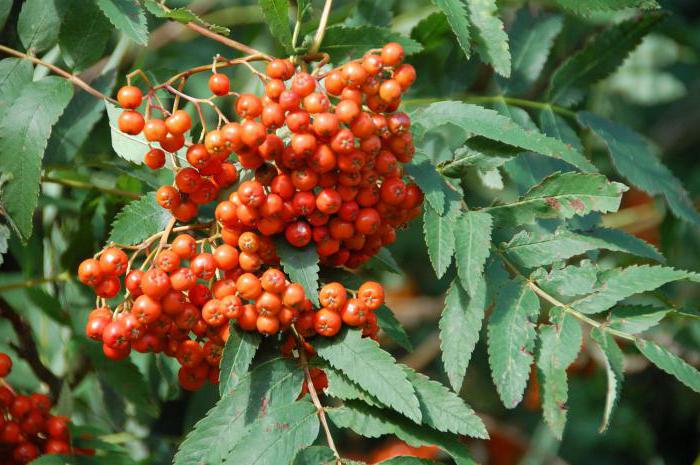
Of course, in the summer or autumn, hardly anyone will eat any salads or dumplings with herbs. The only exception is pies with sorrel or, for example, nightshade. But in the spring, such food is quite capable of maintaining strength and filling the body with vitamins. Of course, at this time of year, most people will have a positive opinion of such dishes. And many people may not refuse some original salad of dandelion leaves and flowers, sorrel and garlic, properly prepared.
In the dictionary D.N. Ushakova
FEED, Korma (stern), about stern, at the stern, many. (region and special in the same meaning as units or in the meaning of different varieties) feed-feed, man. 1. Animal food. Give the chickens food. Give food to the horses. Cattle on pasture. “In winter, the food for us (the animals) was thin.” Krylov. Feeds that are complete in protein, fat, and vitamins. 2. Food for people, food (simple). The food for soldiers was very good back then. • Not for horse food - see horse» title='what is a horse, the meaning of the word horse in Ushakov's dictionary'>horse.
